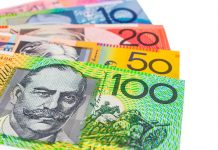Markets
New week, same trends. Starting with the core bond sell-off and underperformance of the (very) long end of the curve. Daily yield changes are similar for German Bunds, US Treasuries and UK Gilts: near flat at the front end (2-yr) and up to 10 bps higher at 30-yr tenors. It needs no explanation that we arrive at new cycle tops for example at the US 10-yr yield (4.52%). The German 10-yr yield breaks above the YTD high at 2.77% to trade above 2.8% for the first time since 2011. The German 30-yr yield tests the psychologic 3% mark, a level which is now clearly broken for the EU 30-yr swap rate (3.07%). Higher real rates are firmly in the driving seat after the Fed last week opened final deniers’ eyes with an end of 2024 policy rate projection above 5%. The increase in real rates continues to hurt risk sentiment. Key European stock indices trade with losses of more than 1%. More importantly, the likes of the EuroStoxx 50 are losing key technical support. The support area around 4200, which survived three earlier tests this year, is giving away. The move has further to go with next technical references at 4017 (38% retracement 2022-2023 rally) to 3981 (YTD low). The US S&P 500 opens below the neckline of a technical double top formation (4335) and so does Nasdaq (13162). This spells trouble. The dollar benefits from the real rate increase and risk aversion. EUR/USD moves below 1.0635/11 support to currently change hands around the 1.06 big figure. Next support stands at 1.0516/1.0484 (March & Jan lows). The trade-weighted dollar is already testing the March (YTD) high at 105.88. USD/JPY outperforms (148.80), suggesting the Japanese ministry of finance and/or Bank of Japan officials will soon be on the radar with (ineffective) verbal interventions. Despite the risk-off context, sterling manages to keep even with the single currency with EUR/GBP 0.87 resistance holding at least for now. Less liquid Central European currencies hold relatively strong despite the market context, with HUF the exception. EUR/HUF is bumping into the 390.50/394.50 resistance area. The Hungarian central bank (MNB) better keeps an eye at the currency when defining forward guidance at this week’s central bank meeting where they are to cut the overnight deposit rate by the final 100 bps, bringing it in line with the 13% base rate.
News & Views
The Swedish krone outperforms global peers today. EUR/SEK is moving from 11.86 at the open to 11.72 currently, extending gains from last week Friday. Exactly one week ago, the pair was flirting with an all-time high around EUR/SEK 12. The strong SEK is surprising given the that risk aversion is dominating over other markets, including equities. Two elements may explain the move though. First off, one of the country’s biggest but struggling landlords took important steps to stabilize its finances. At the very least, it eased some concerns about possible knock-on effects that could filter through into the wider economy. Second, the Swedish central bank began its programme to hedge its FX reserves against the possibility of a recovery in the Swedish krone. It announced to do so at the policy meeting last week. The move is done from a risk management point of view – SEK appreciation would saddle up the central bank with substantial losses in its FX portfolio. But one could also consider it a signal that the Riksbank believes the current SEK decline is overdone.
The NBB’s Belgian business confidence marginally improved in September, halting a decline in place since April this year. The uptick from -14.9 to -14.4 does conceal wide sectoral differences though. There was a clear improvement in business-related services on the account of significantly better activity expectations. A near stabilization in the manufacturing industry comes amid more optimistic employment but worse demand expectations. The latter was especially the case for trade, explaining the decline of confidence in this sector. The steep drop in the building industry was broad-based across all subsectors. The trend in orders as well as equipment fell off a cliff. Demand expectations were the exception, which held up despite the prevailing gloom, the NBB said. It remains to be seen whether it is the start of a slow bottoming out process.













